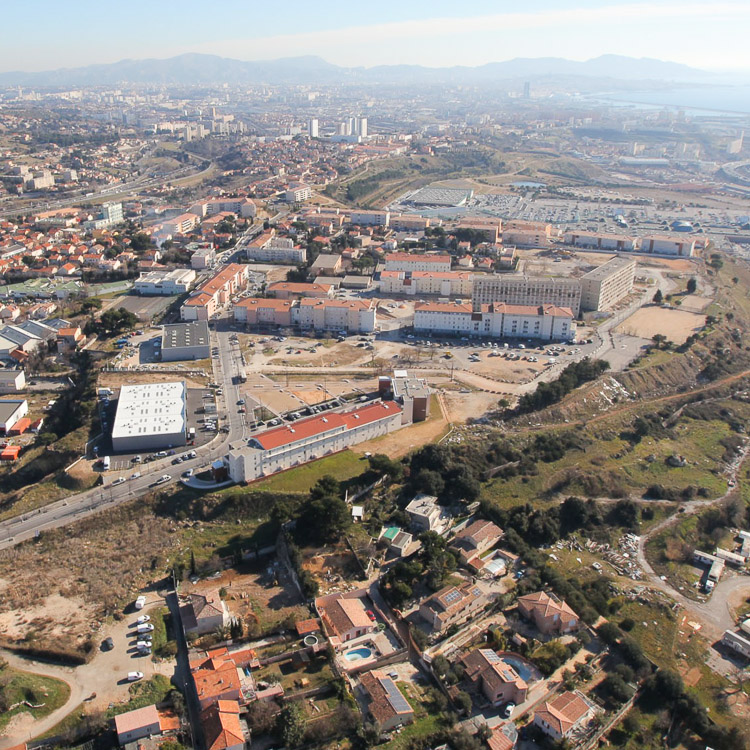A new Urban Village
Author(s)
arkilab
Jeanette W. Frisk (DK)
Rasmus Frisk (DK)
Actor(s)
City of Marseille
Marseille Rénovation Urbaine
Competition Team
Jeanette W. Frisk (DK)
Rasmus Frisk (DK)
architects - urban planners
Bianca M. Hermansen (DK)
architect - urban planner
Emilie S. Kjeldsen (DK)
student in architecture
Europan 12 Marseille Plan d'Aou
runner-up
2013
Team point of view
The masterplan proposes a rethinking of the traditional French Village, known worldwide of the capacities of its community buildings as well as its celebration of natural settings. These two components are integrated into the proposal largely in two ways:
1. The focus on community building via the creation of a series of different community spaces and sub spaces which provide individuals with social choices.
2.The celebration of the secluded nature of the site through the framing of evocative views and vistas.
The topological plateau creates an urban island, surrounded by both greenery and city fabric. This unique situation is indeed worth preserving, yet connections are needed to facilitate human activities and well-being, all carefully chosen and designed with high urban quality.
Jury point of view
This project proposes the creation of a highly structured urban fragment that gives Plan d’Aou a tauter fabric. In it, space follows a gradation from public to private through three types of urban entity: street, alley and yard. Place d’Aou, in the middle of the intergenerational building, is designed as an adaptable urban space pre-set to accommodate different public uses (markets, games, concerts etc…)
The jury liked the distinctiveness of the team’s approach in proposing urbanisation on the southern hill with an unexpected architectural form. It also highlighted the project’s capacity to open the neighbourhood to a more diverse population.
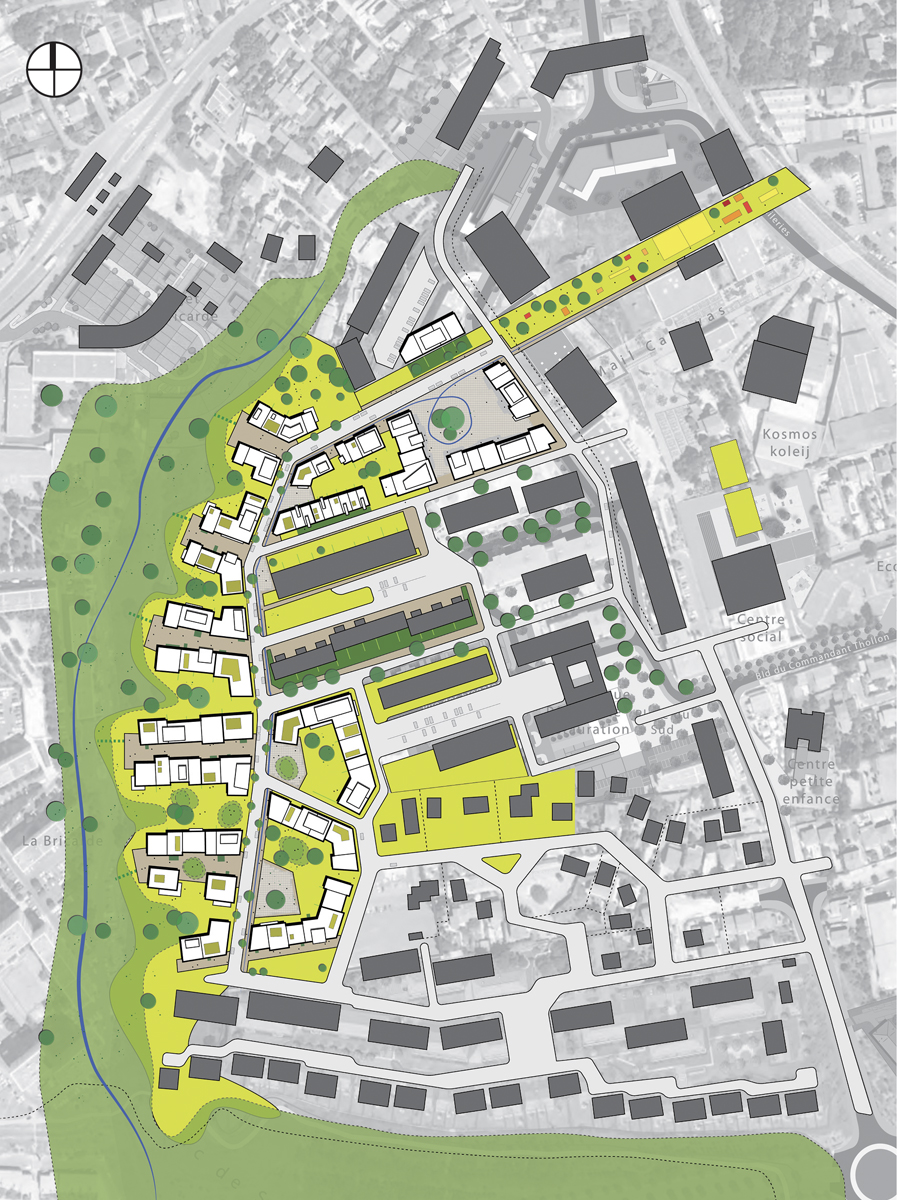
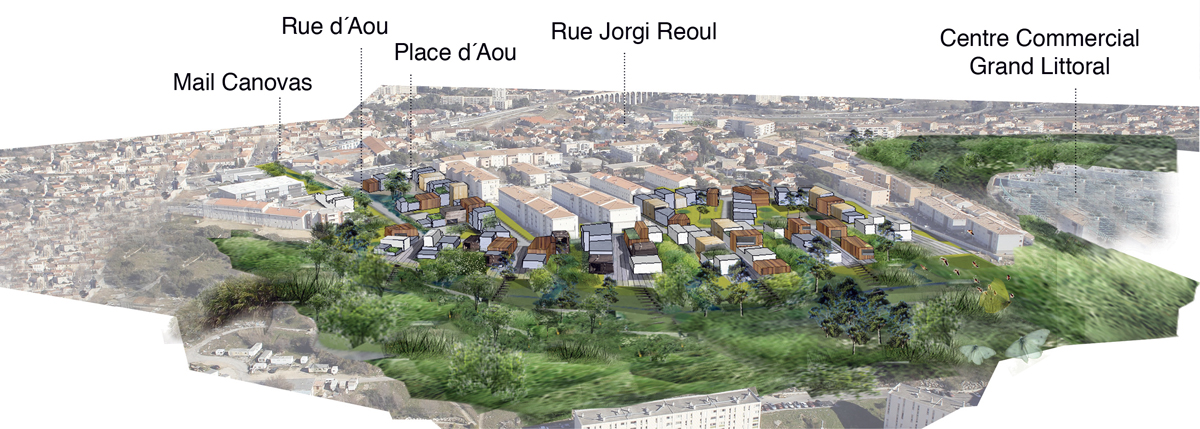
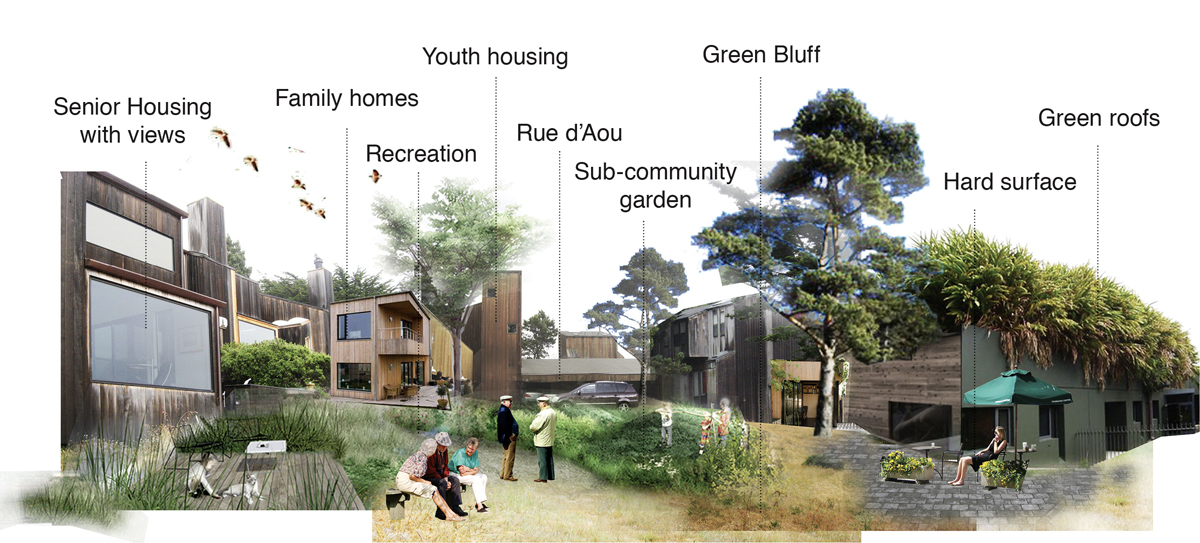
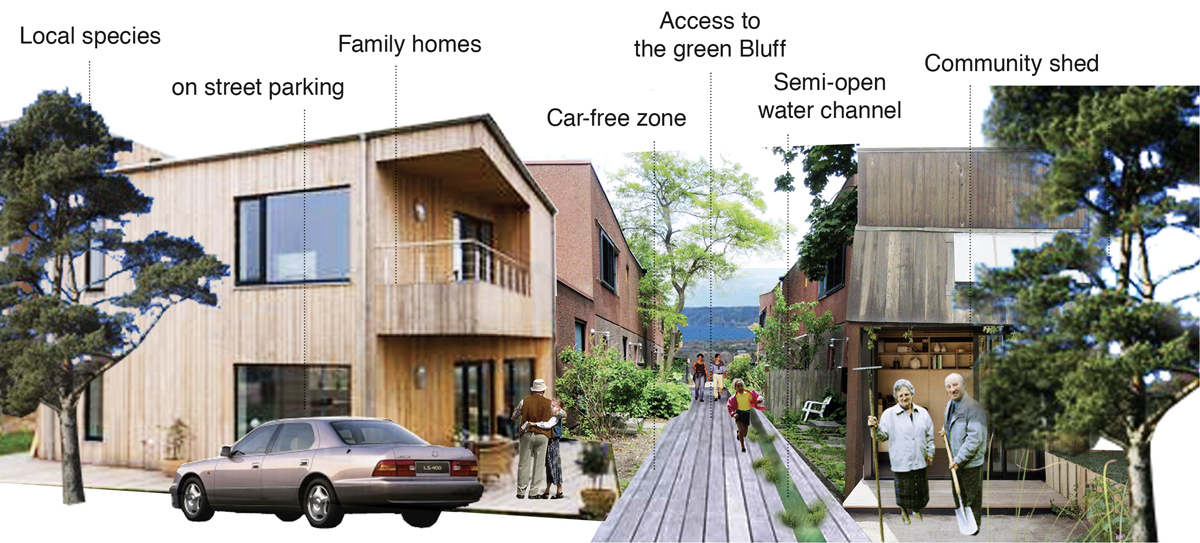
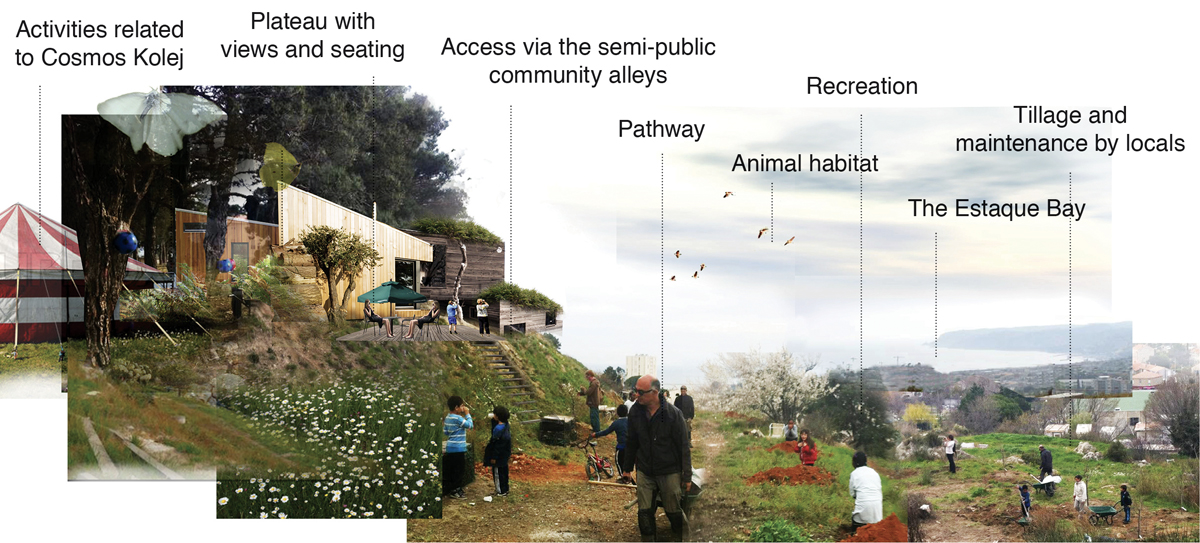
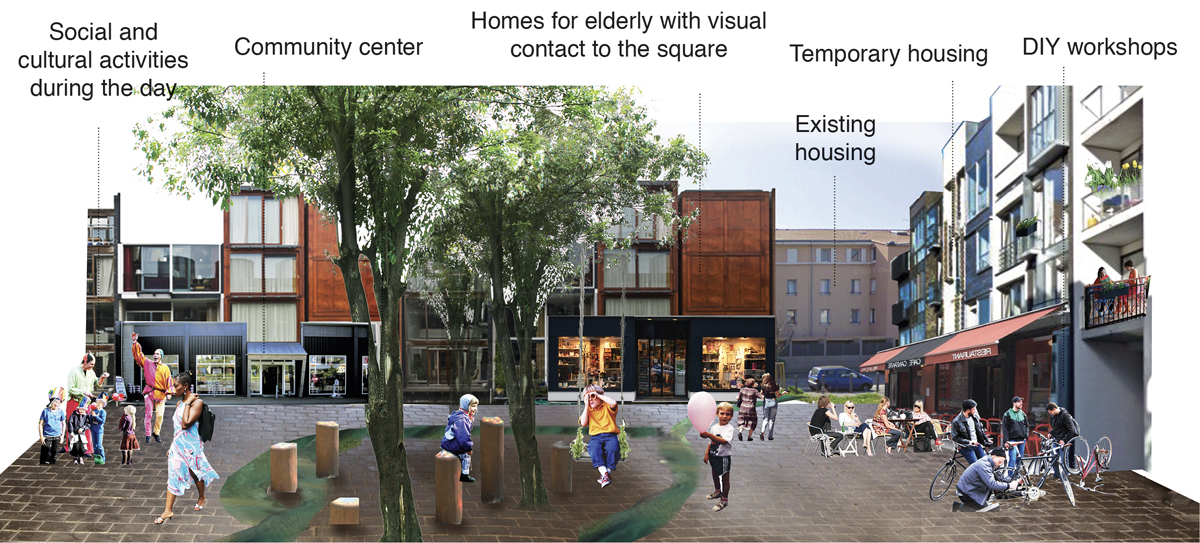
2014-2015
Marseille Rénovation Urbaine entrusted both prize-winning teams to make an urban study in order to redefine the site’s programation, the feasibility of the project and make proposals for a new qualitative urban and architectural logic.
A series of 3 workshops of 2-3 days took place over 6 months, in situ. Local actors (city, associations, lessors) and inhabitants were invited to work, discuss and ask questions etc.
The Danish team notably brought their know-how in terms of tools and participatory process. They set up during two workshops a specific tool for communication, analysis and creative participation based on the uses of urban space: Arki_nopoly.
This tool made it possible to collect for the project ideas for spatial proposals or proposals for modus operandi. And it also made it possible to raise public awareness of urban planning and the various challenges of the urban project.
At the end of these workshops, a document of about one hundred pages was submitted on the potential orientations of the site combining the more social and participatory proposals of the Danish team with the more urban and architectural ones of the French team.
Then ERILIA, the main landlord on the site, through Marseille Rénovation Urbaine, contacted the two teams to create a so-called "prefiguration" public space. The Danish team cannot ensure such a mission from so far away, decides to leave the team.
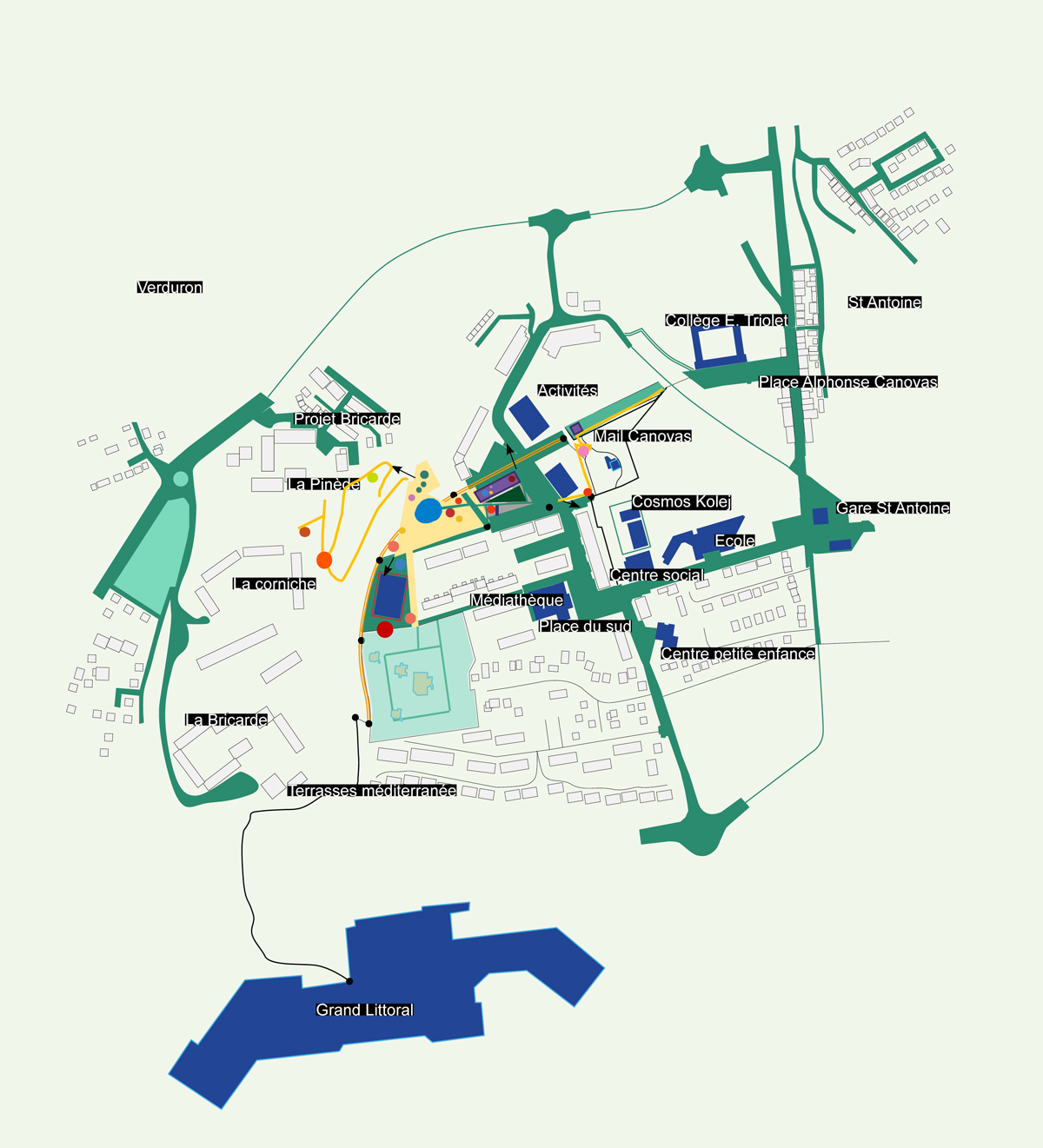
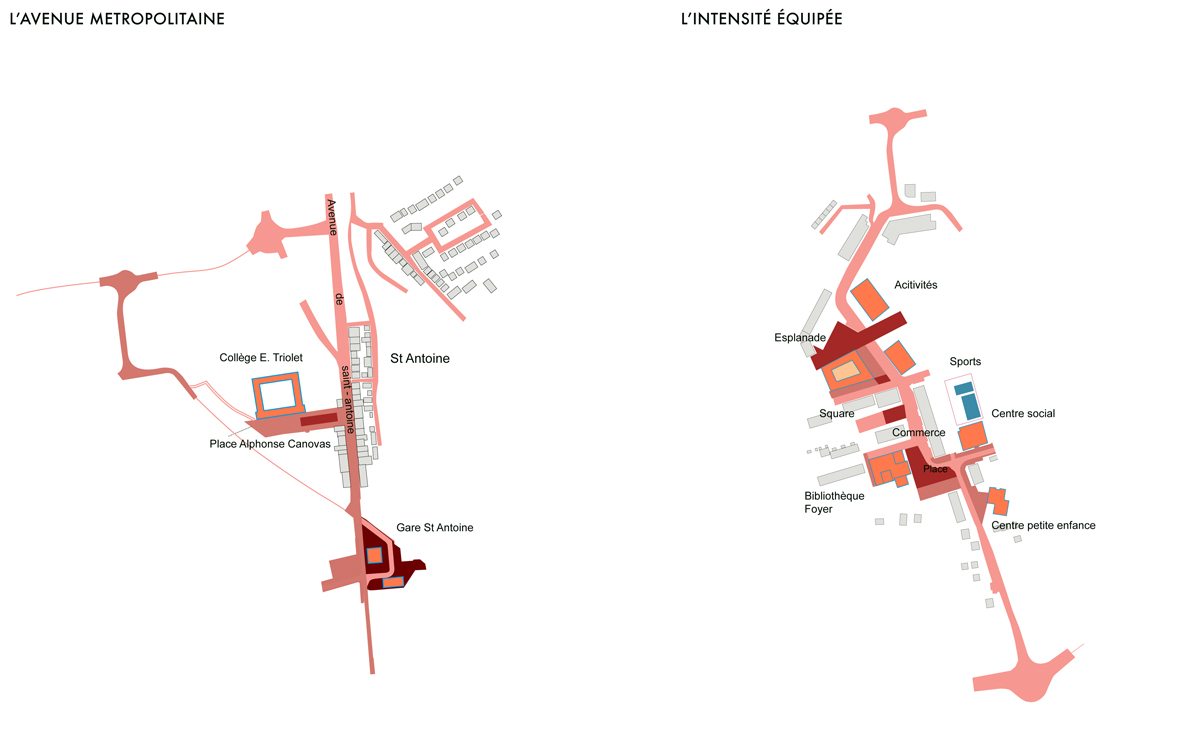
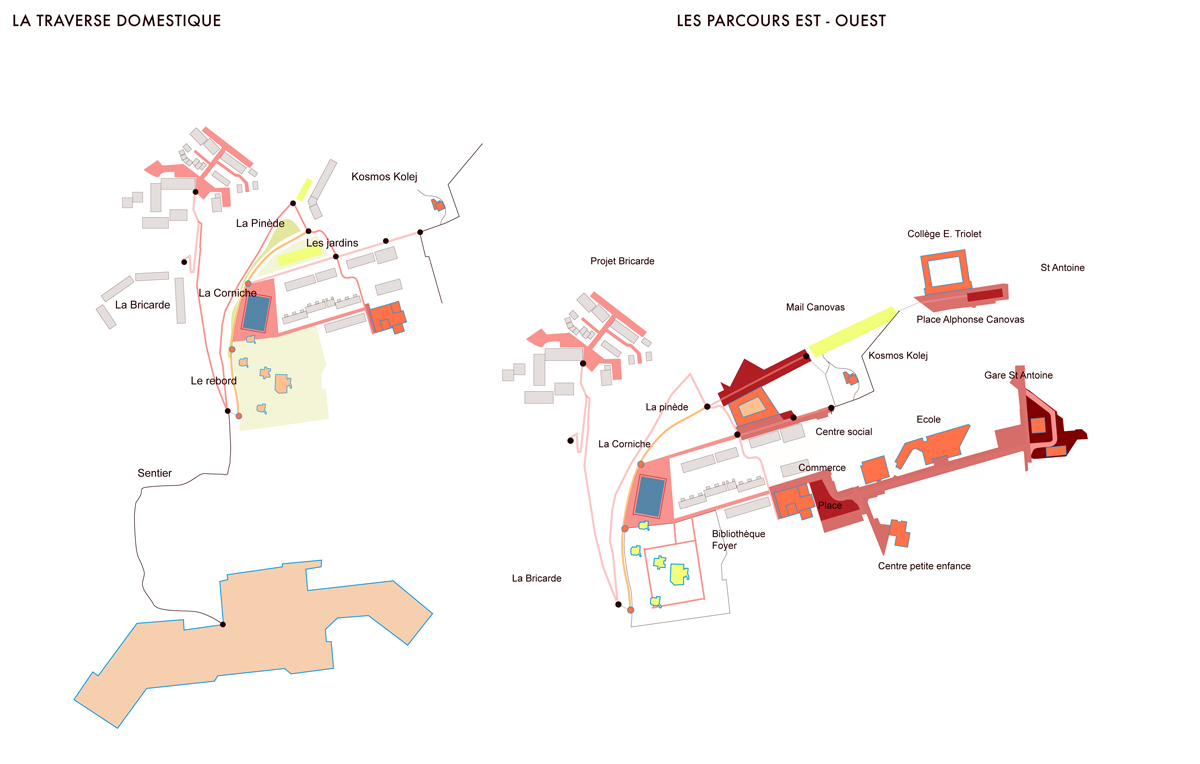
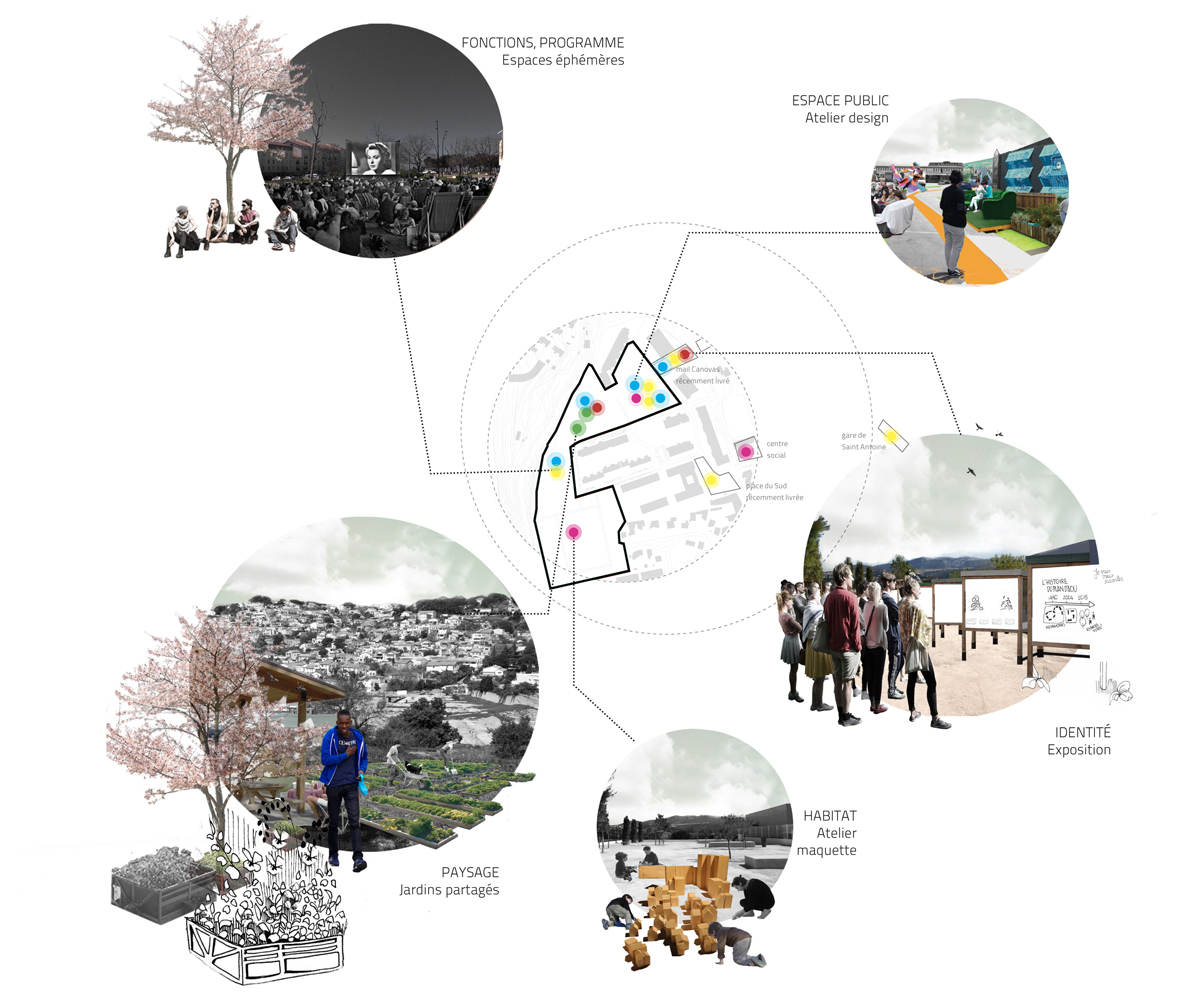
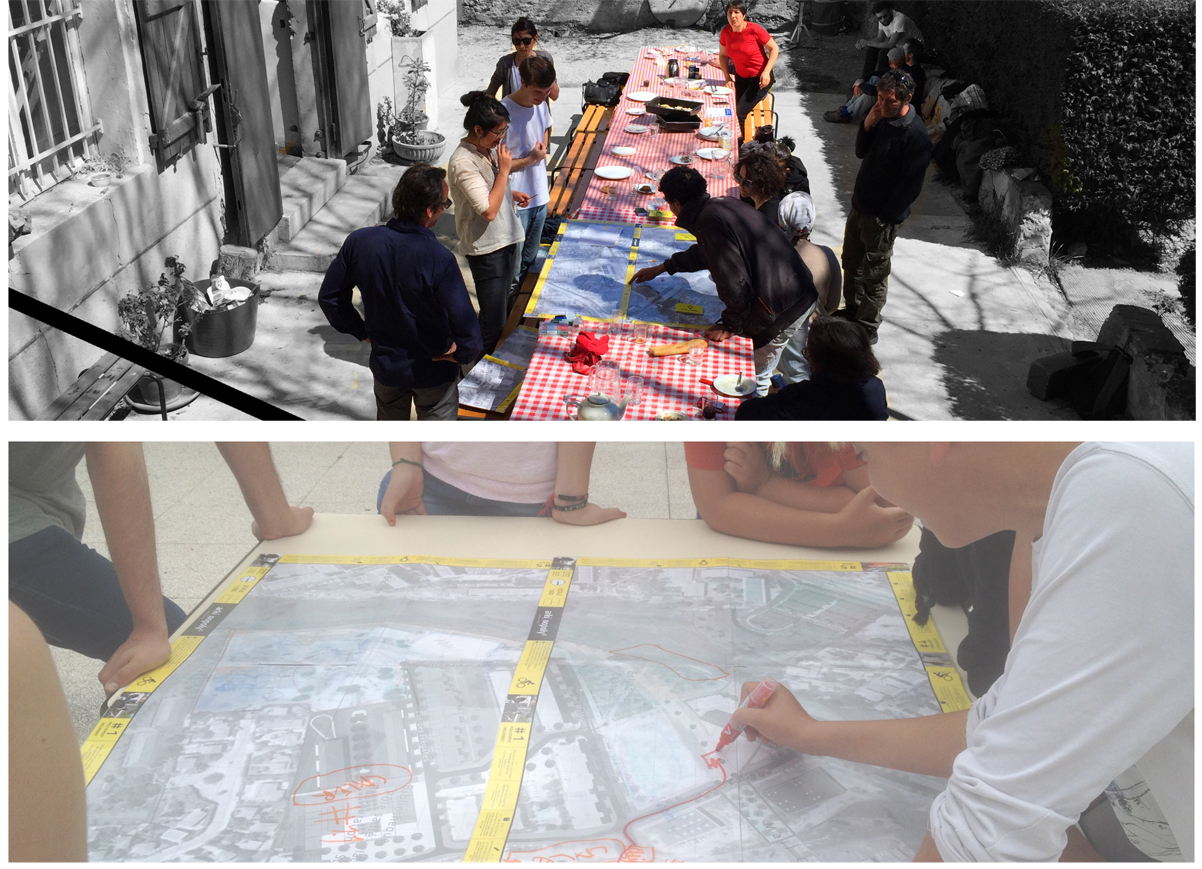
This project is connected to the following themes

Shared spaces - A Frame for social life
The new village is built around three kinds of shared spaces: the connecting main street, the pathways for local communication, and the courtyards, creating the openings toward the landscape. The articulation of the spaces creates an urban environment enhancing the sense of community and living together.

Housing - Community
A collection of spatial sequences at several scales explore the intermediate areas in-between the private and the public realm, highlighting the continuity with the existing landscape. The sequence is composed by: the alleys (semi-public passages), the yards (semi-open courts) and the bluff (a connecting corridor).

Nature - Limit / Reconnection
An "ecological infrastructure" favours a new community dynamic and requalifies the hill as a limit. This figure is not a juxtaposition of individual gardens, but a shared space where human, animal and vegetal species are cohabiting.
